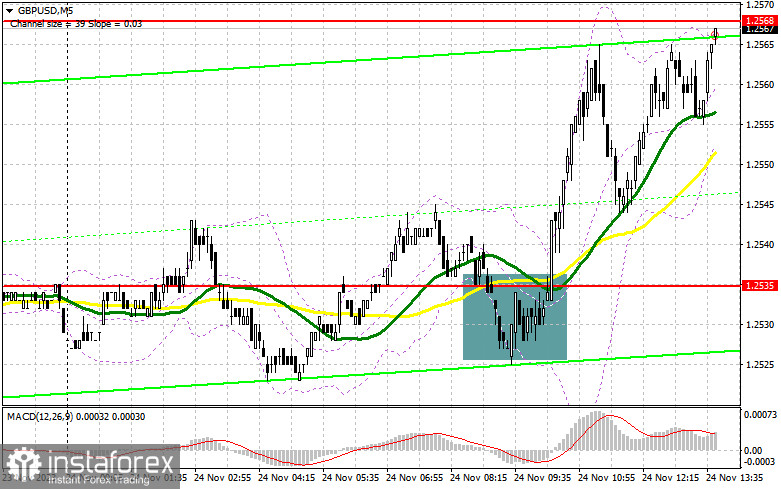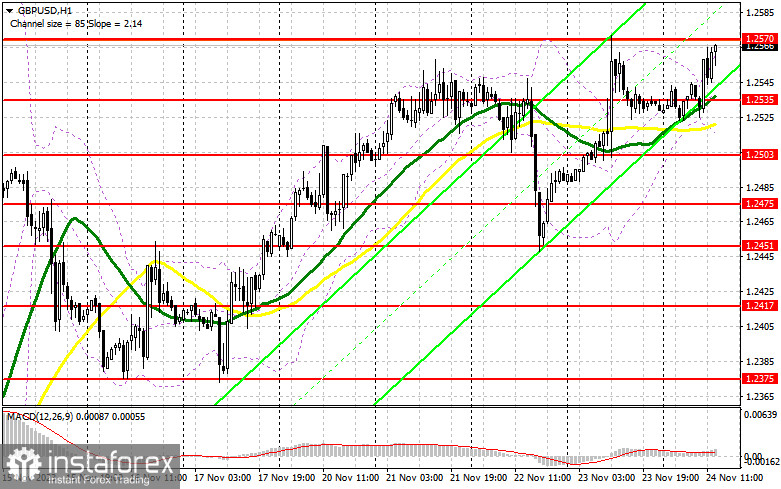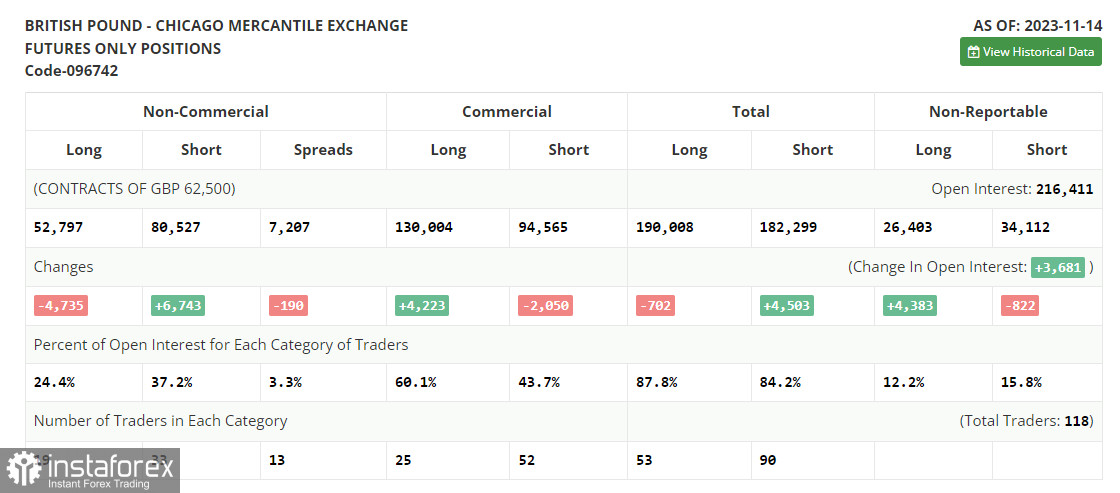In my morning forecast, I drew attention to the level of 1.2535 and recommended making decisions on market entry based on it. Let's look at the 5-minute chart and analyze what happened there. The decline and the formation of a false breakout led to a buy signal, resulting in an upward movement of about 30 points. However, there has been no breakthrough in monthly highs so far. The technical picture was slightly revised for the second half of the day.

To open long positions on GBP/USD, the following is required:
Ahead of us are data on the business activity index in the US manufacturing sector, as well as figures on the PMI index for the services sector and the composite PMI index. The data is expected to be quite decent, so the pressure on the pound may return at any moment. To increase long positions in the current conditions, I prefer to wait for a decline and the formation of a false breakout in the new support area at 1.2535, just below which the moving averages, favoring buyers, are located. This will give a buy signal and lead to an upward trend to update this month's maximum of 1.2570. Breaking and consolidating above this range will lead to a new signal to open long positions with an exit to 1.2604. The ultimate target will be the area of 1.2638, where I will take profit. In the scenario of a pair's decline and the absence of activity from buyers at 1.2535 in the second half of the day, which is more likely, pressure on the pair will increase. Only a false breakout in the next support area at 1.2503, where the moving averages are, will signal the open long positions. I plan to buy GBP/USD immediately on the rebound, only from 1.2475, with the target of a correction of 30-35 points within the day.
To open short positions on GBP/USD, the following is required:
Sellers failed to offer anything in the first half of the day, and all they have left now is to defend 1.2570. A false breakout at this level and strong US statistics will be the perfect recipe for selling the pound at the end of the week with the goal of a decline to support at 1.2535, around which the main battle will unfold during the American session. Breaking and reverse testing from the bottom to the top of this range will deal a more serious blow to buyer positions, leading to the removal of stop orders and opening the way to 1.2503. The more distant target will be the area of 1.2475, where I will take profit. The upward trend will continue in the scenario of GBP/USD growth and the absence of activity at 1.2570 in the second half of the day. In this case, I will postpone selling until a false breakout at 1.2604. If there is no downward movement, I will sell GBP/USD immediately on the rebound from 1.2638, but only counting on a pair's correction down by 30-35 points within the day.


Indicator Signals:
Moving Averages:
Trading is conducted slightly above the 30 and 50-day moving averages, indicating further pair growth.
Note: The period and prices of moving averages considered by the author are on the hourly chart H1 and differ from the general definition of classic daily moving averages on the daily chart D1.
Bollinger Bands:
In case of a decrease, the lower boundary of the indicator at 1.2520 will act as support.
Indicator Descriptions:
- Moving Average (MA): Determines the current trend by smoothing volatility and noise. Period 50. Marked on the chart in yellow.
- Moving Average (MA): Determines the current trend by smoothing volatility and noise. Period 30. Marked on the chart in green.
- Moving Average Convergence/Divergence (MACD): Fast EMA period 12. Slow EMA period 26. SMA period 9.
- Bollinger Bands: Bands indicating overbought or oversold conditions. Period 20.
- Non-commercial Traders: Speculators such as individual traders, hedge funds, and large institutions use the futures market for speculative purposes and meet certain requirements.
- Long Non-commercial Positions: Represents the total long open positions of non-commercial traders.
- Short Non-commercial Positions: Represents the total short open positions of non-commercial traders.
- Total Non-commercial Net Position: The difference between non-commercial long and short positions.
 English
English 
 Русский
Русский Bahasa Indonesia
Bahasa Indonesia Bahasa Malay
Bahasa Malay ไทย
ไทย Español
Español Deutsch
Deutsch Български
Български Français
Français Tiếng Việt
Tiếng Việt 中文
中文 বাংলা
বাংলা हिन्दी
हिन्दी Čeština
Čeština Українська
Українська Română
Română

